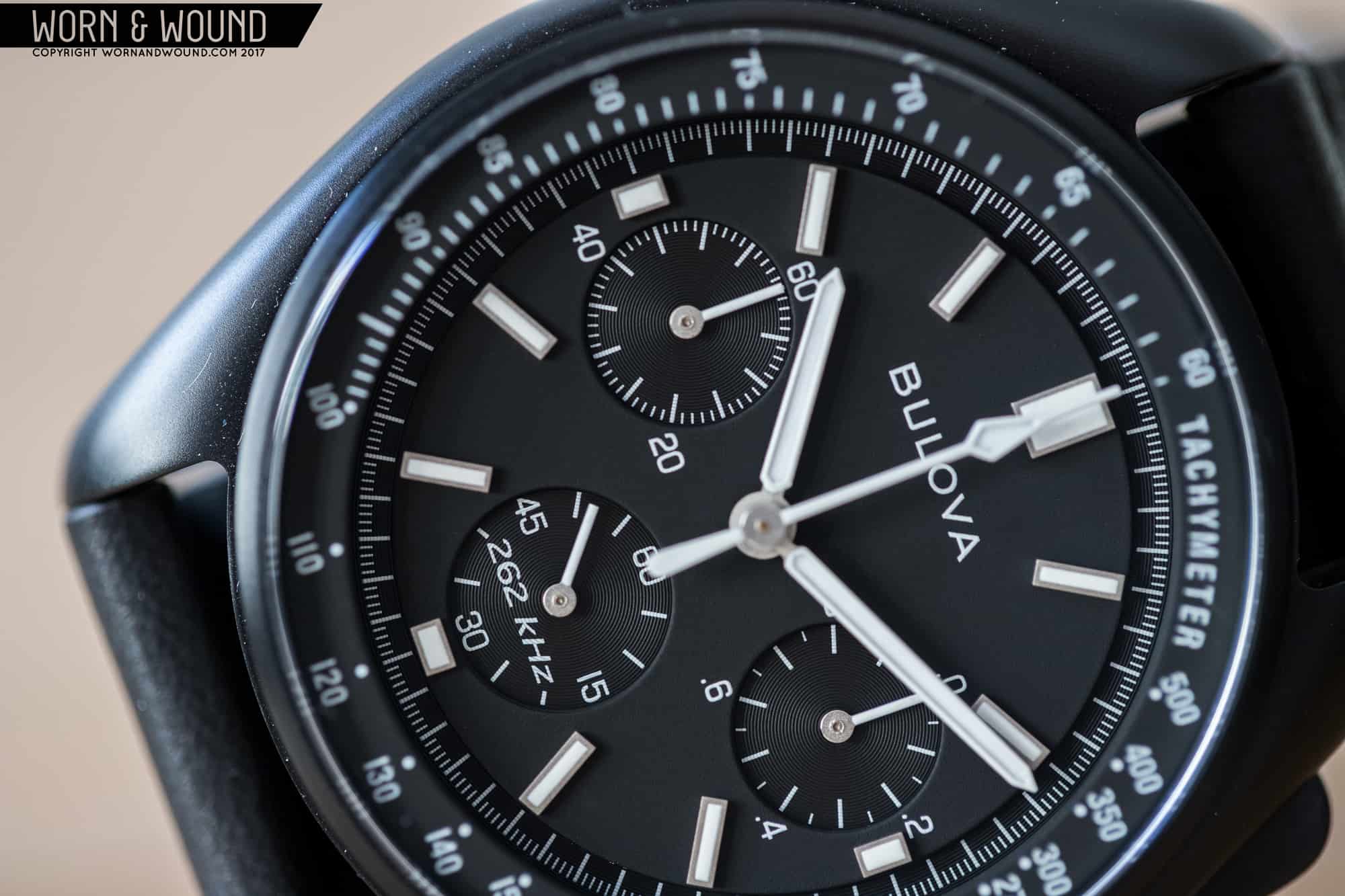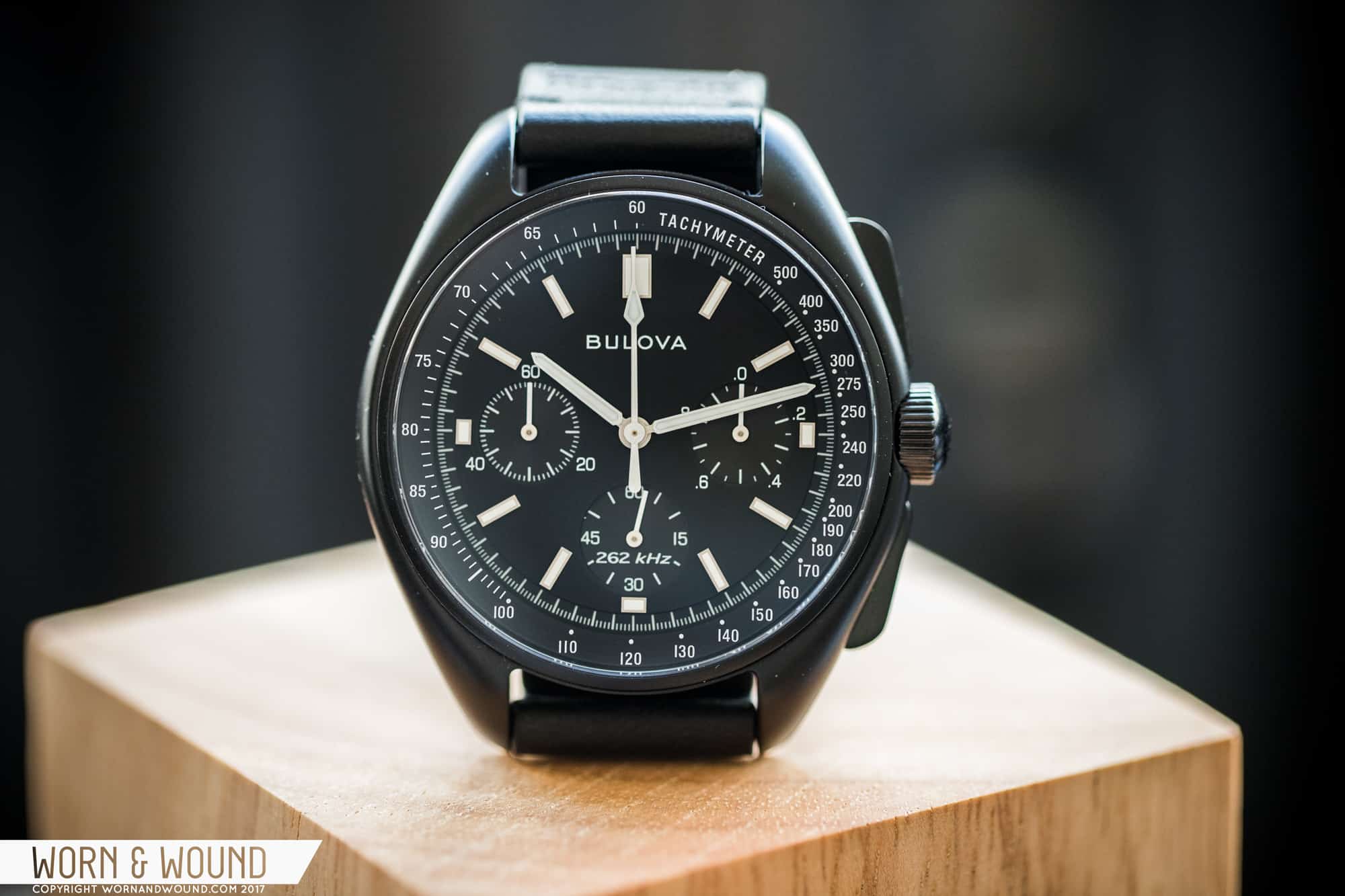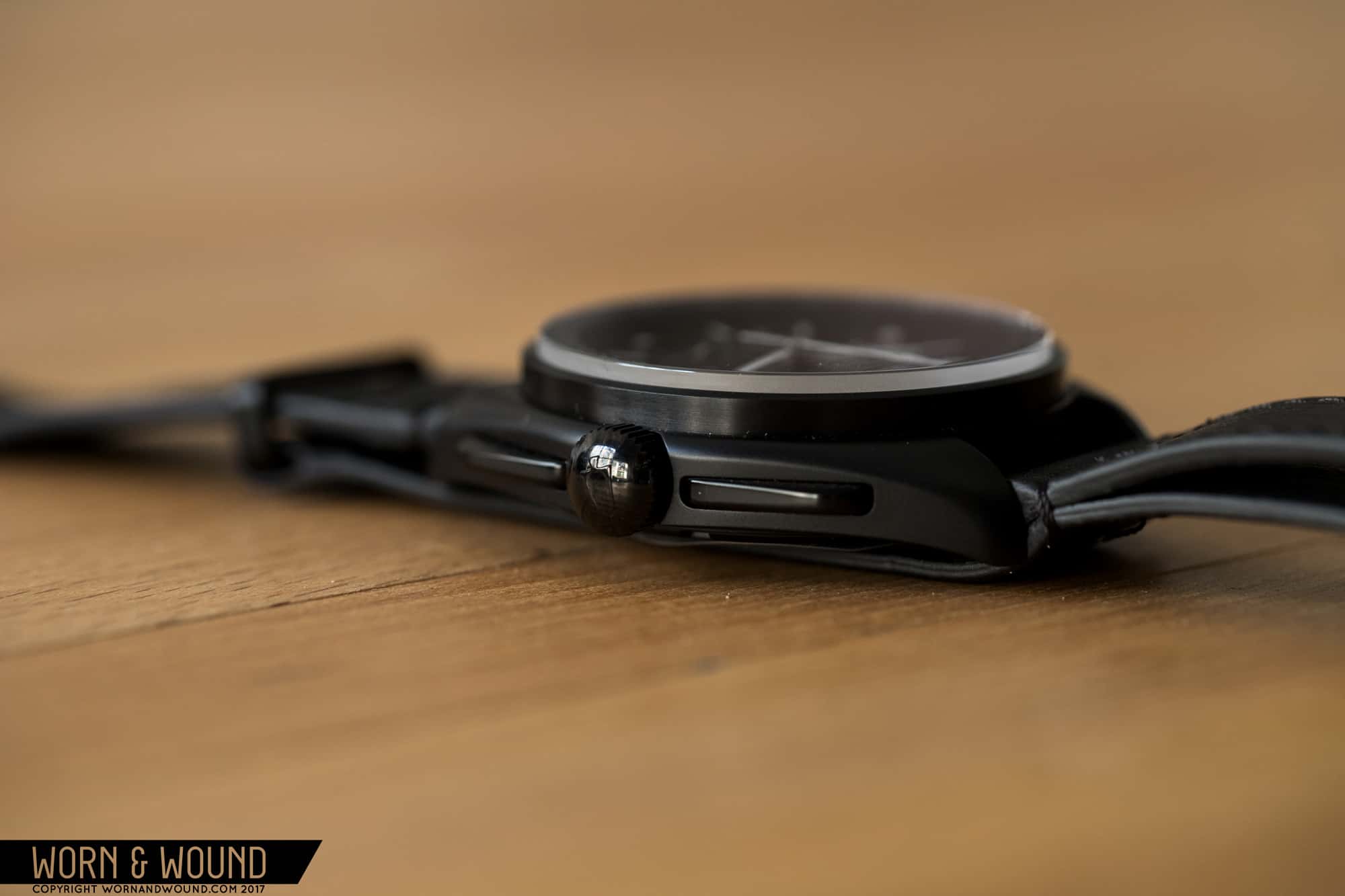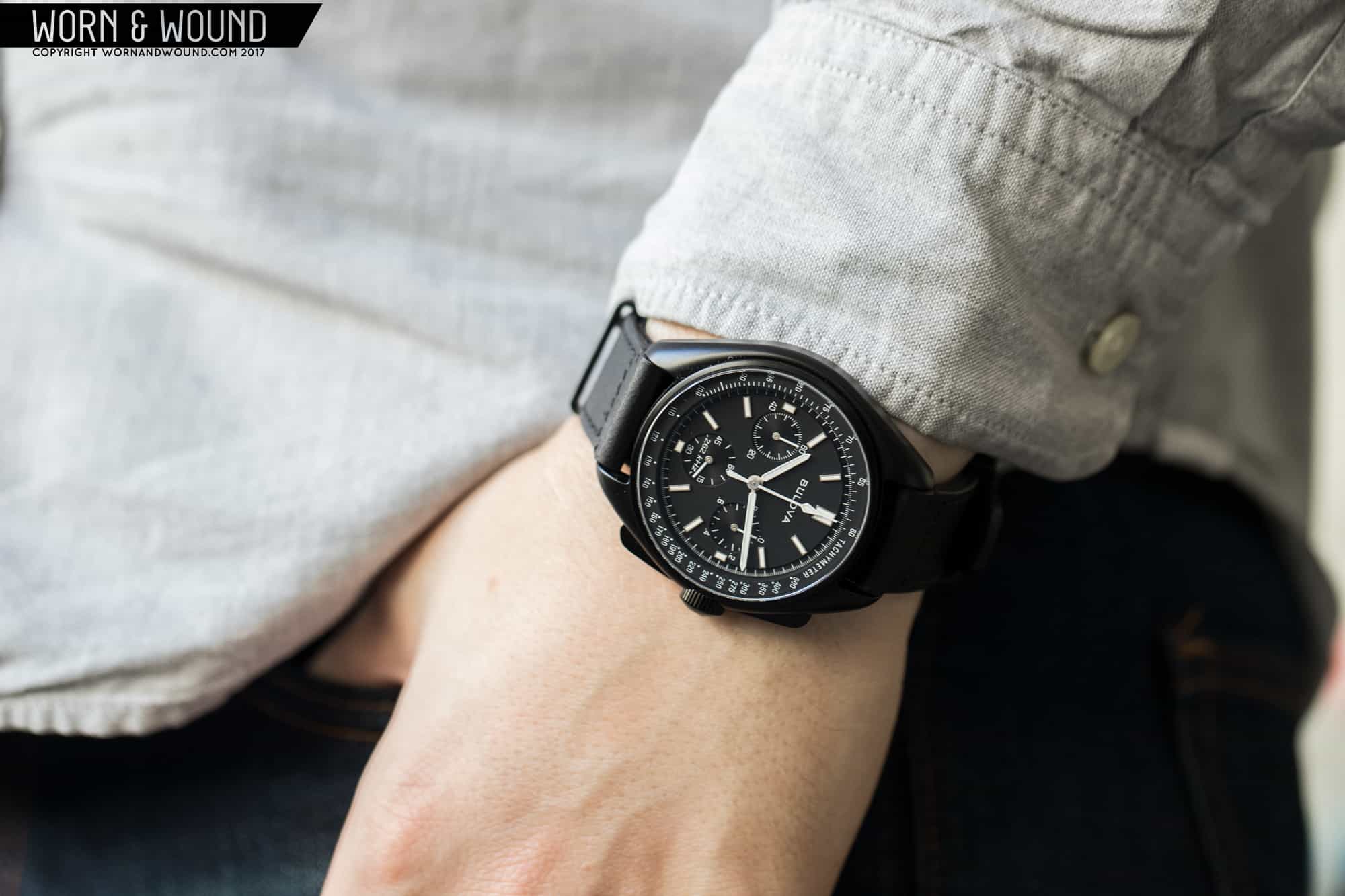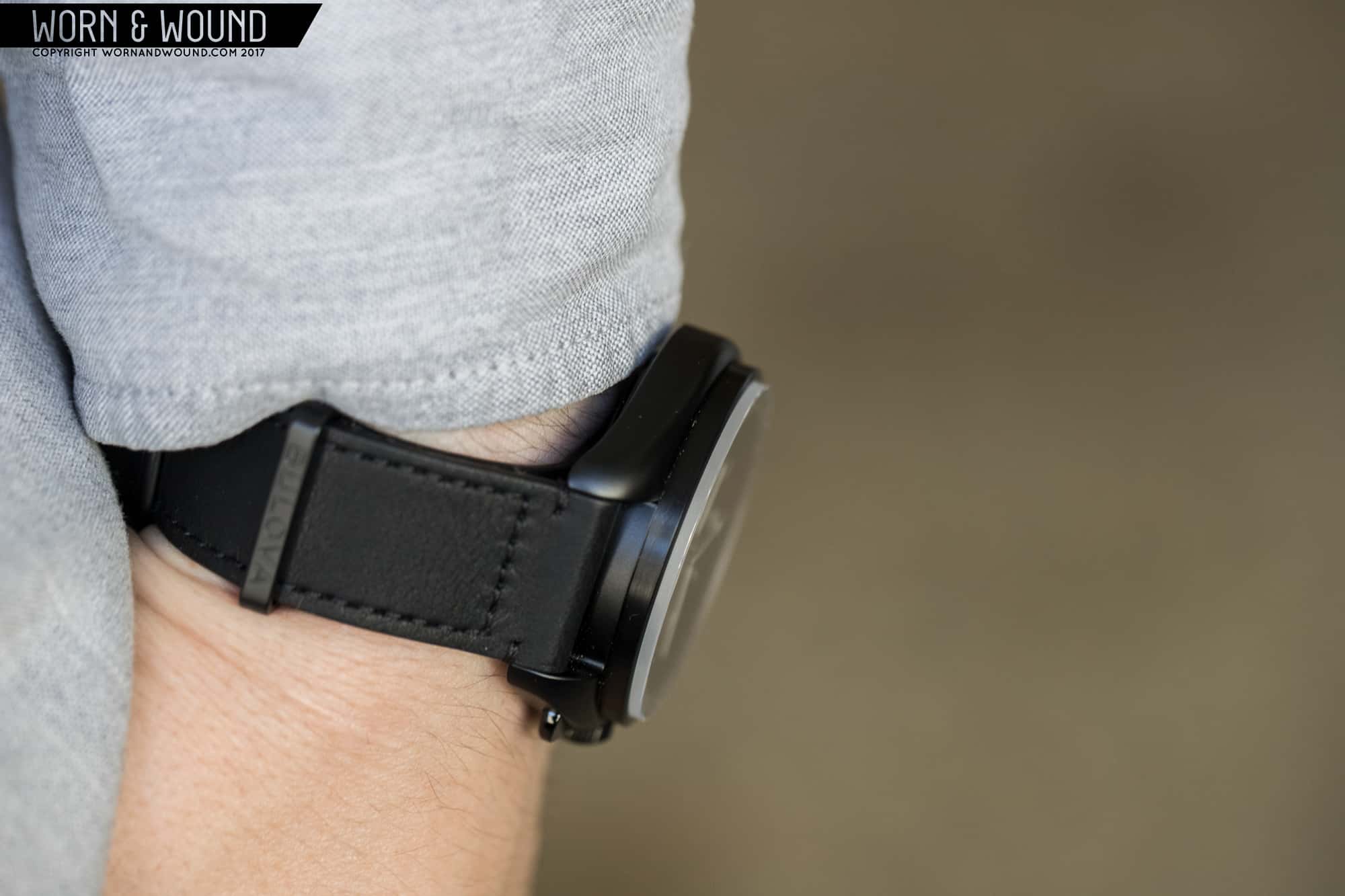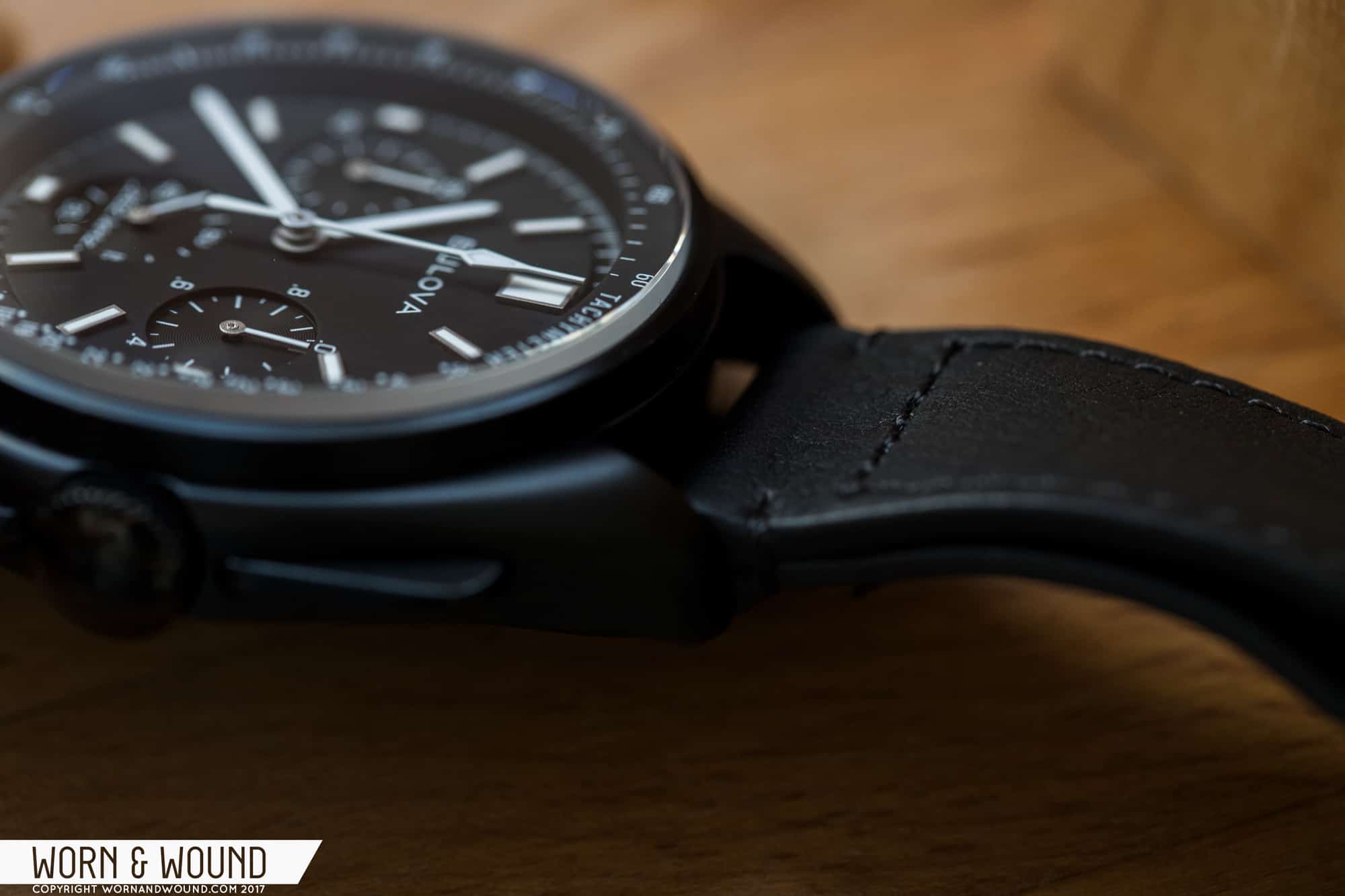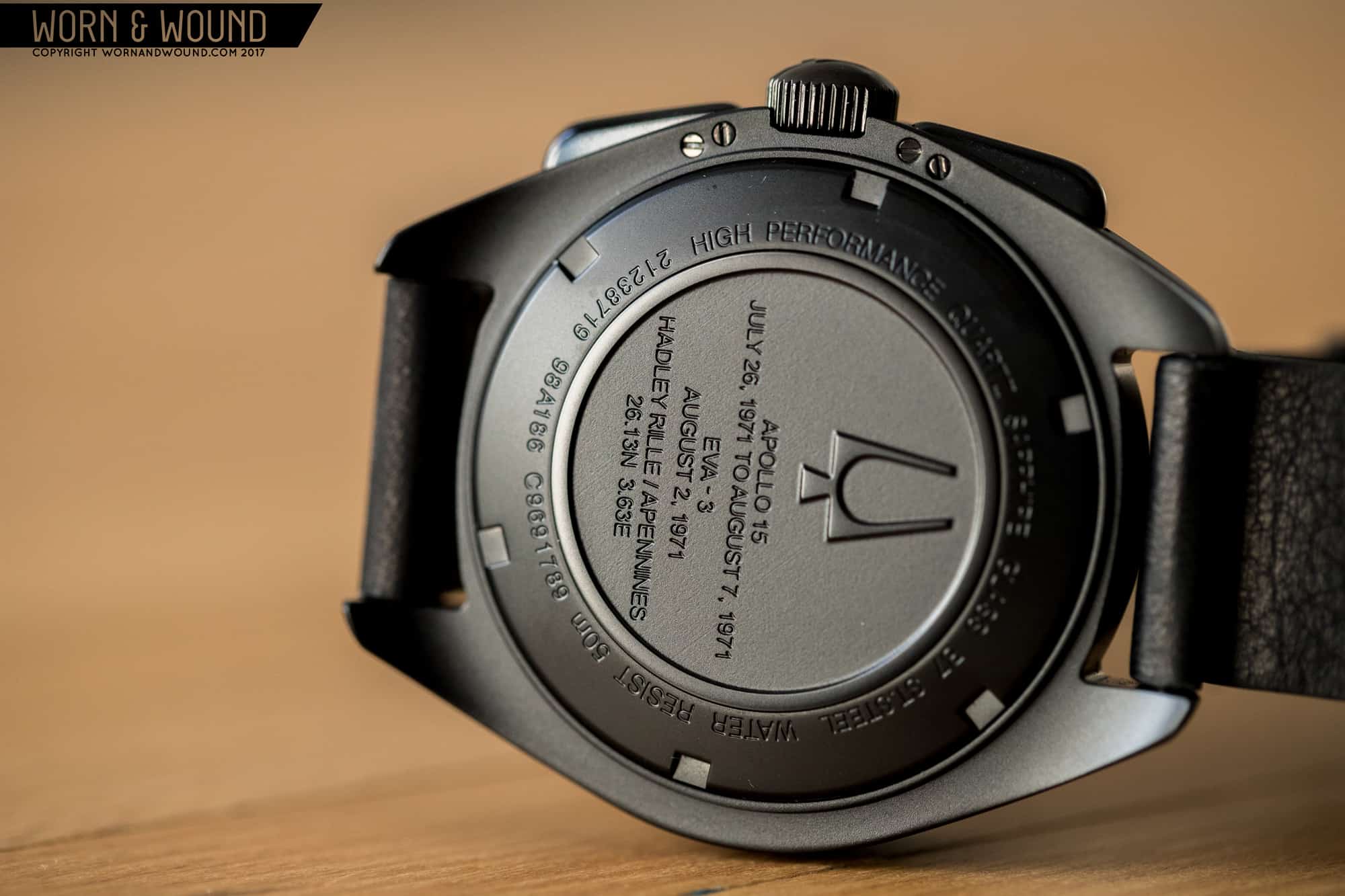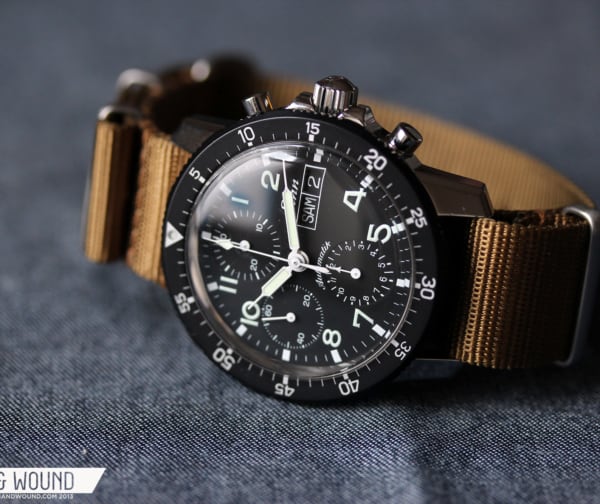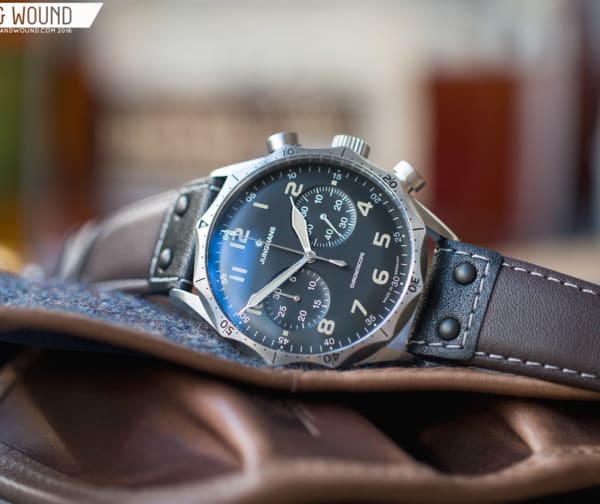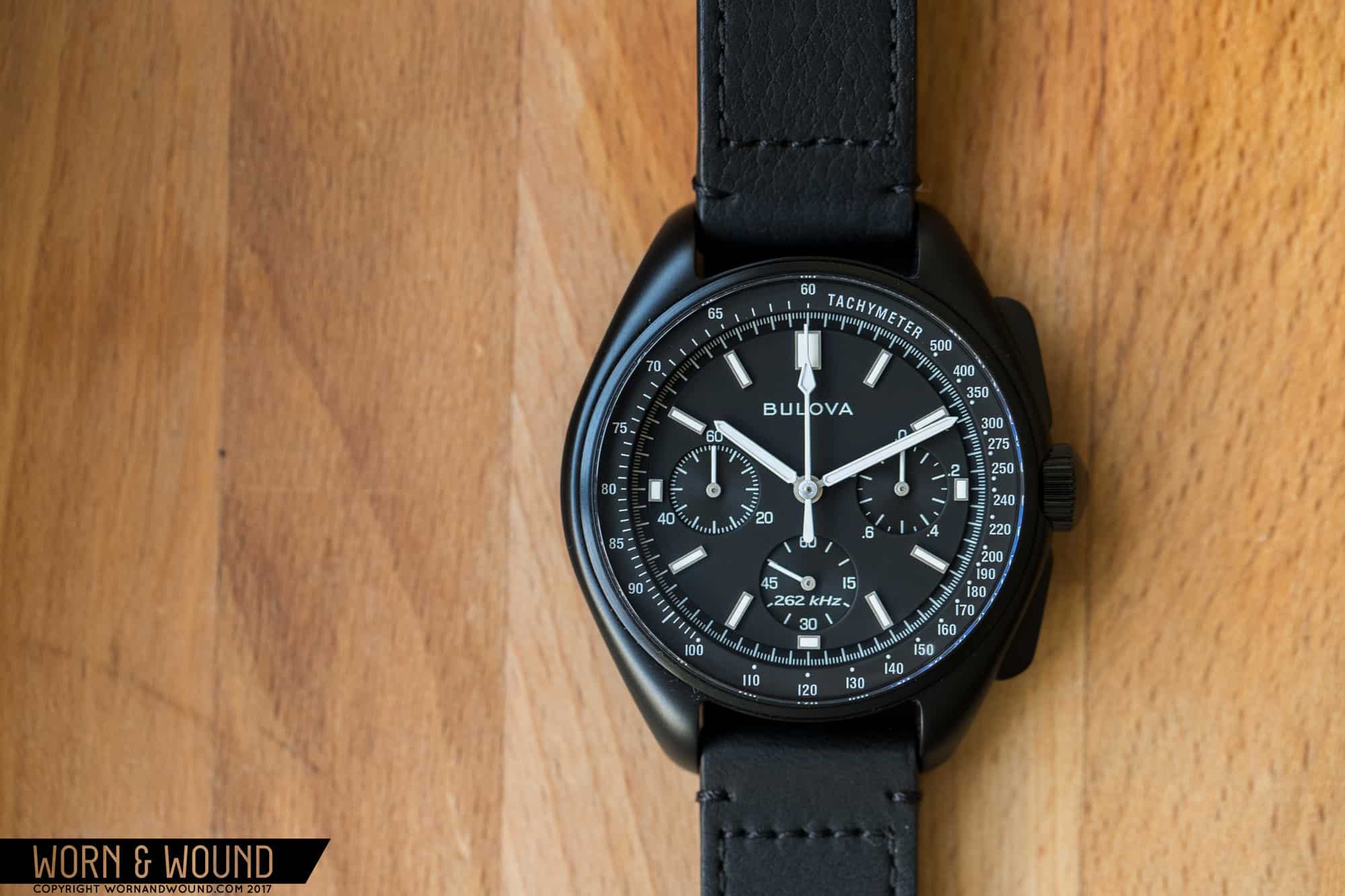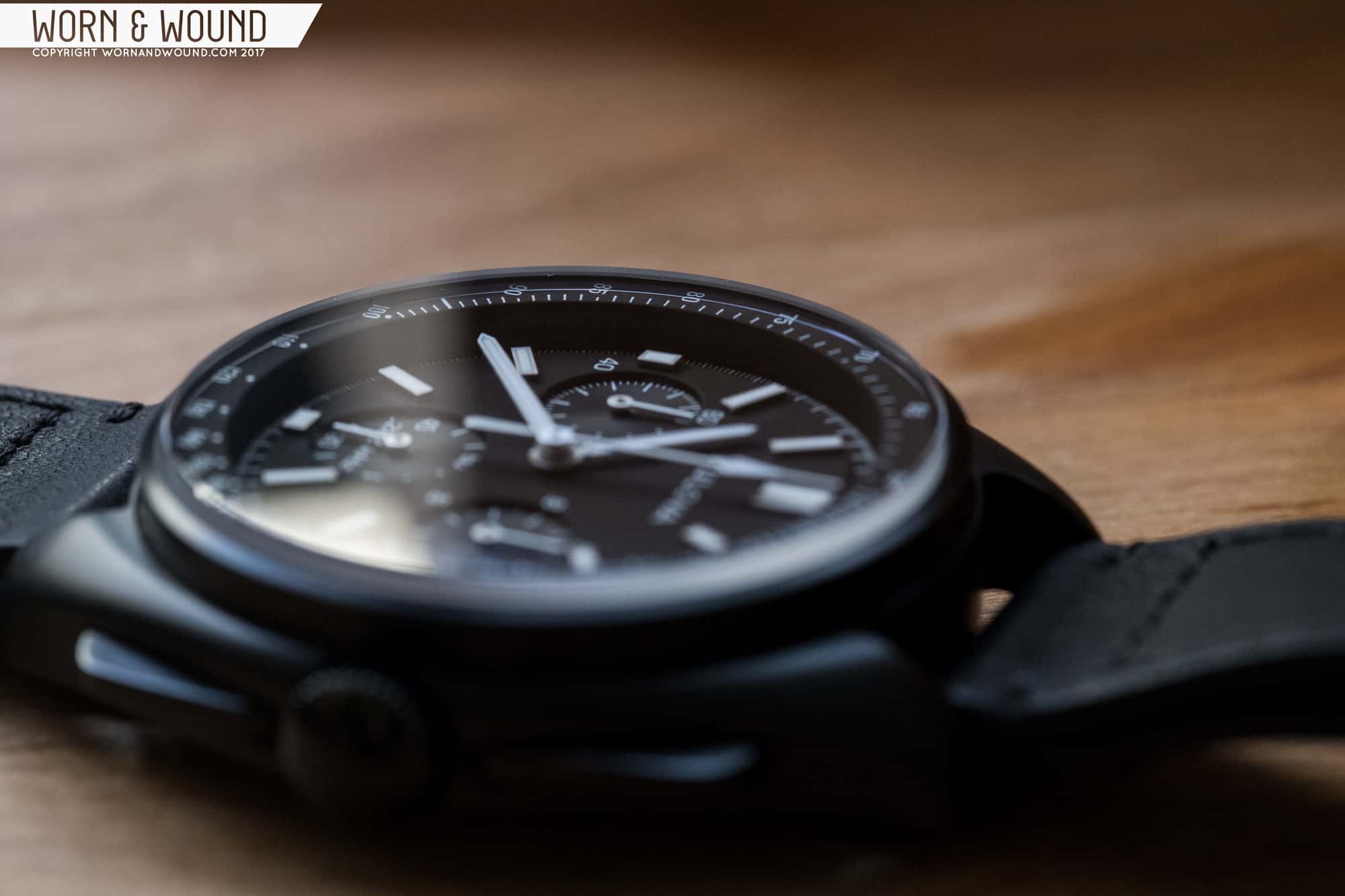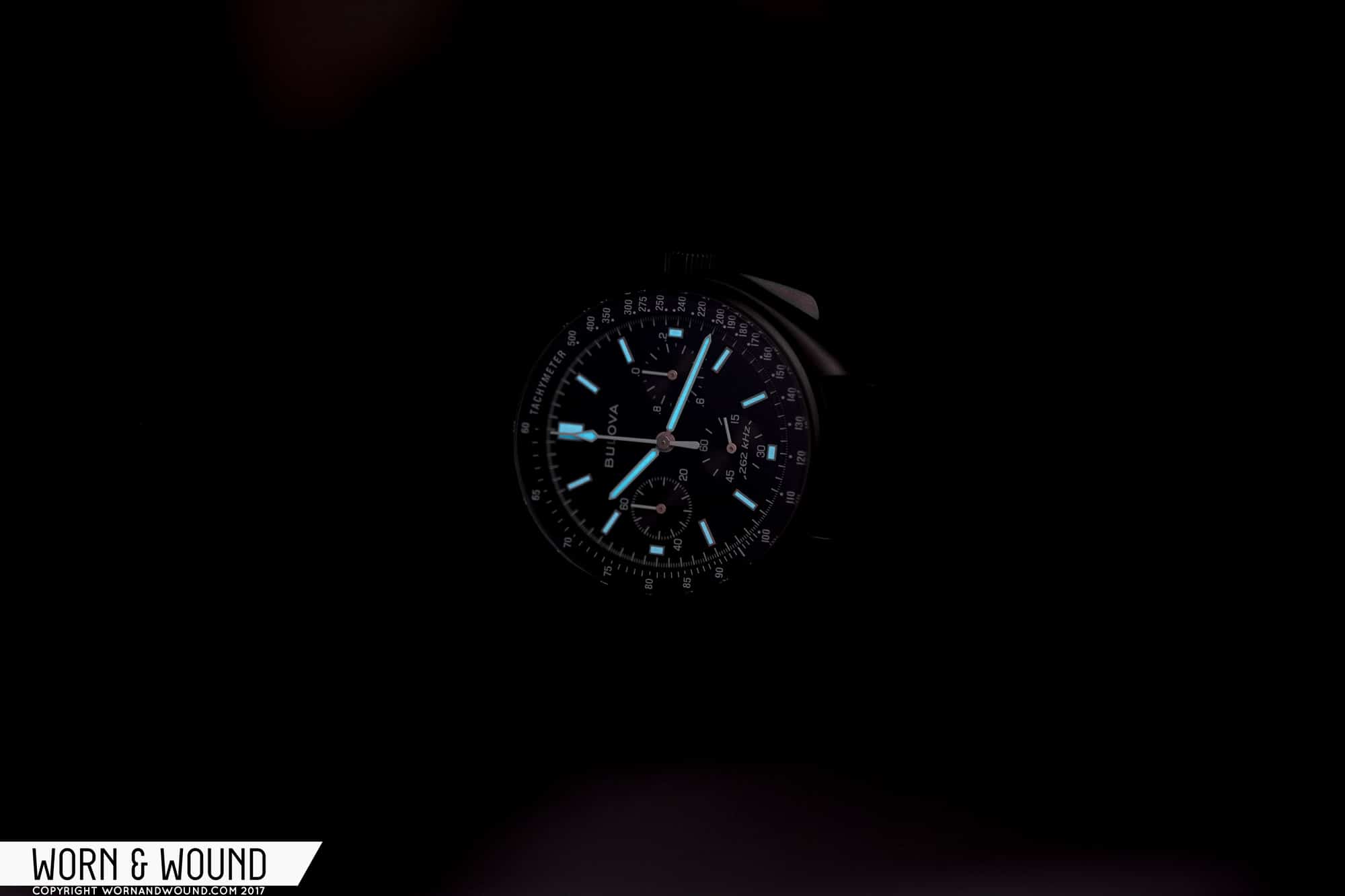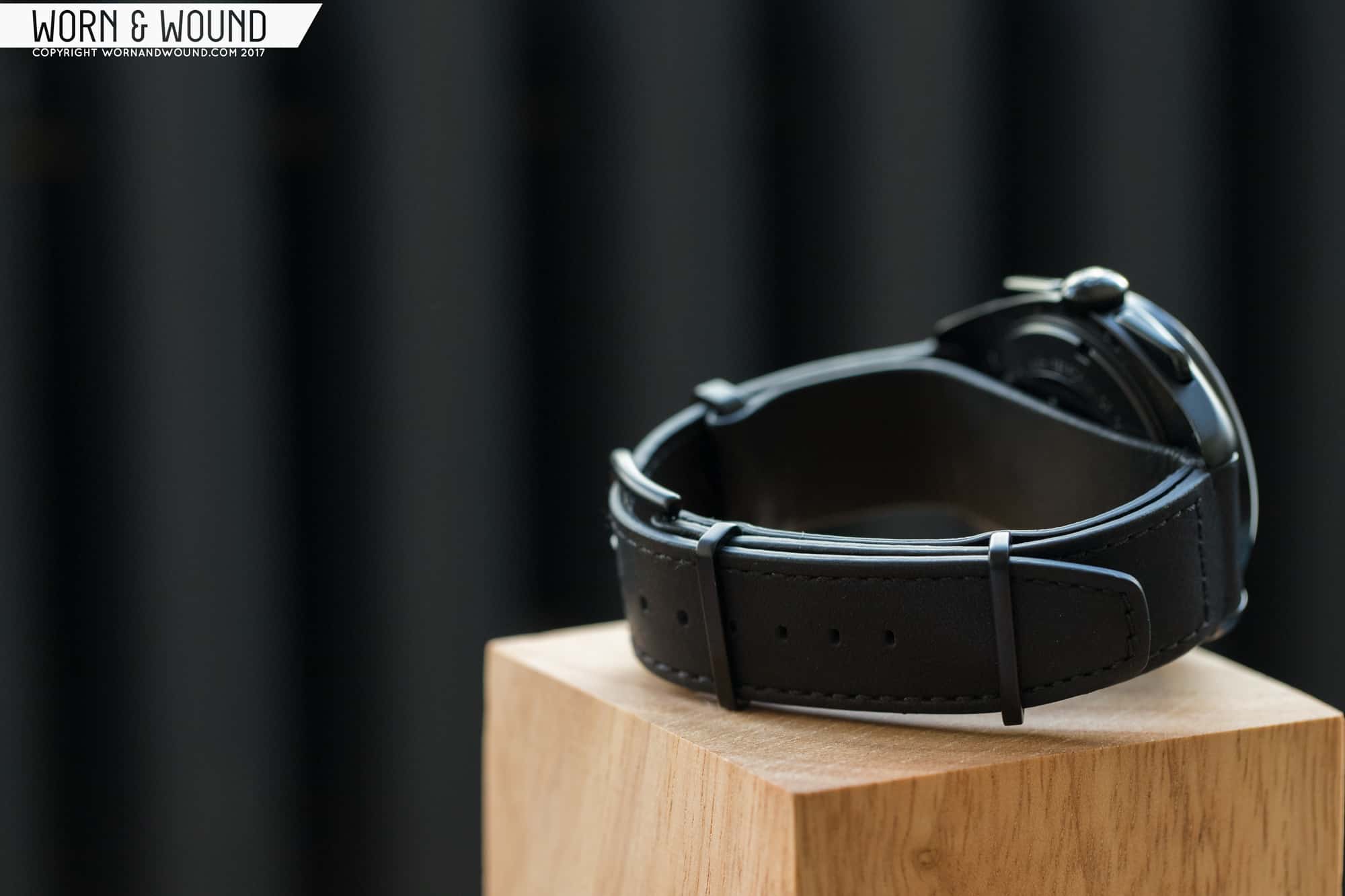The historical Bulova “Moon Watch” has a long and fascinating, albeit a somewhat convoluted, history. The watch was made for Astronaut David Scott, who wore it on the Apollo 15 mission. His watch surfaced in 2015, and later that year it was sold for a whopping $1,300,000 at auction. Last year, Worn & Wound contributor Hung Doan did a deep dive into the watch. I won’t spoil what he discovered here; I’ll just say that his research took quite a few interesting twists and turns along the way (seriously, if you haven’t read it yet, do it now and come back to this review. It was one of my favorite stories of 2016).
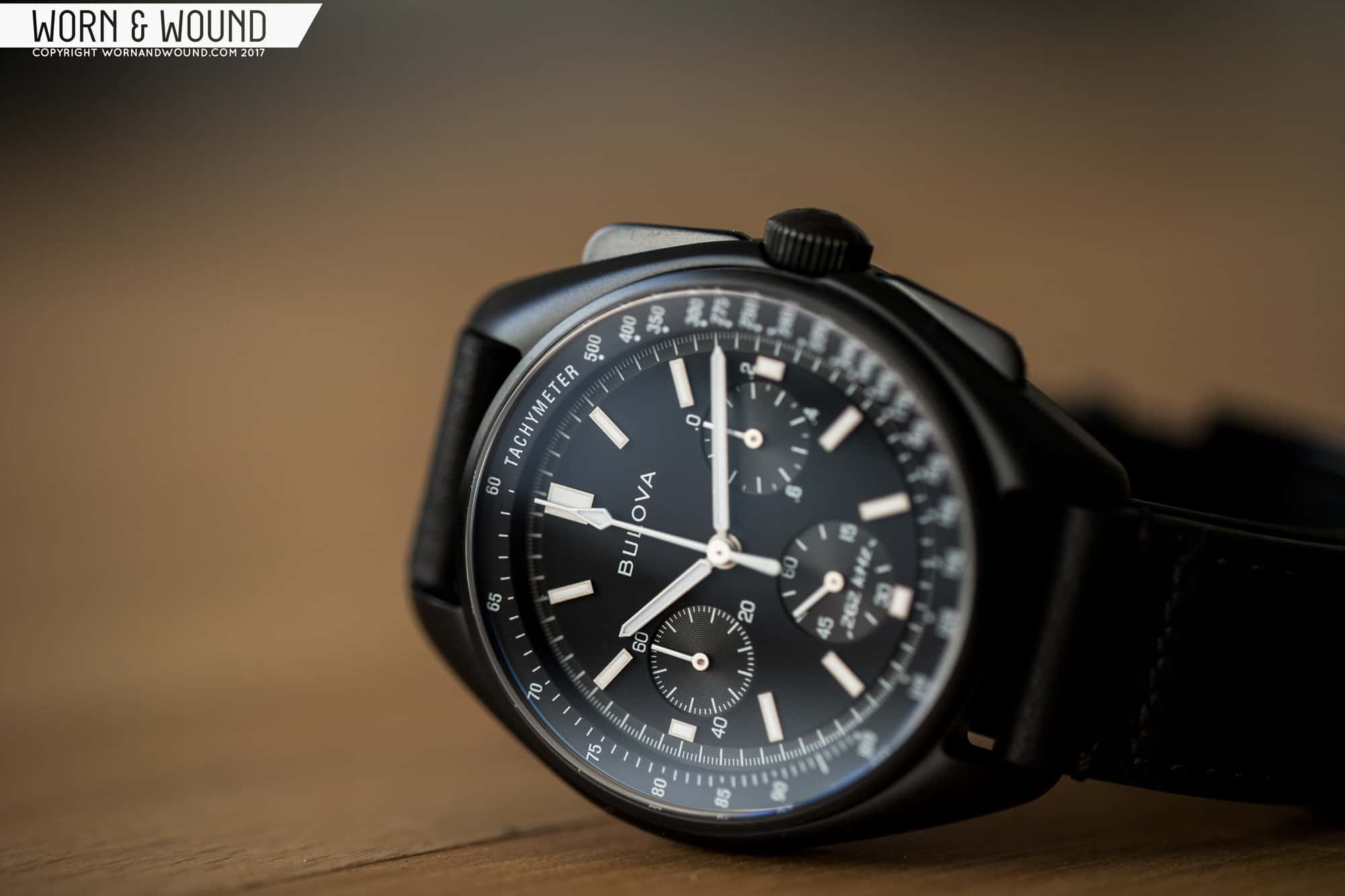 Capitalizing on the hype surrounding the story and watch, Bulova released their first reissue to great acclaim in 2015. $550 retail got you a relatively faithful recreation of that historic model, and the watch, given its cost and adherence to the source material, was a massive hit for the brand. Bulova then released a follow up in 2017, tweaking a few things along the way. And that’s what we’re looking at today—the 2017 edition of the Lunar Pilot Chronograph.
Capitalizing on the hype surrounding the story and watch, Bulova released their first reissue to great acclaim in 2015. $550 retail got you a relatively faithful recreation of that historic model, and the watch, given its cost and adherence to the source material, was a massive hit for the brand. Bulova then released a follow up in 2017, tweaking a few things along the way. And that’s what we’re looking at today—the 2017 edition of the Lunar Pilot Chronograph.




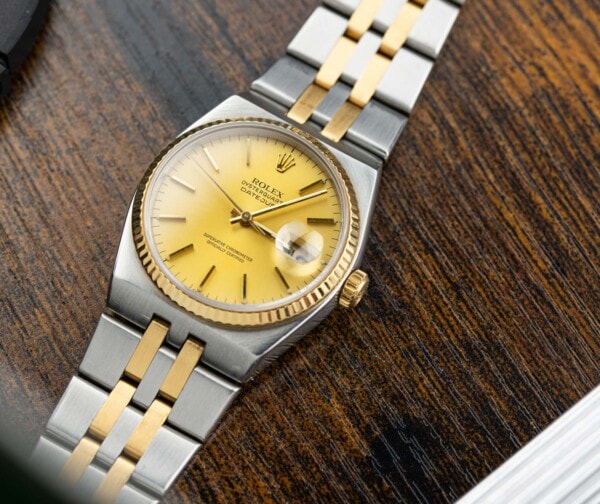




 Featured Videos
Featured Videos




